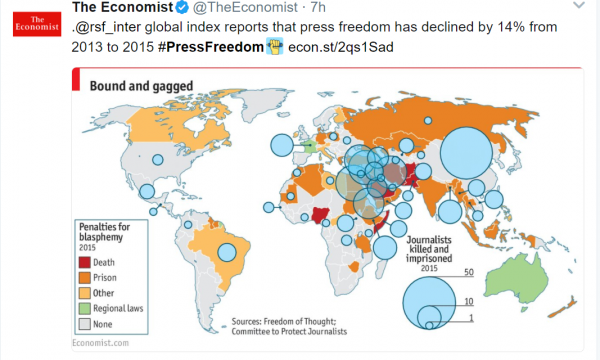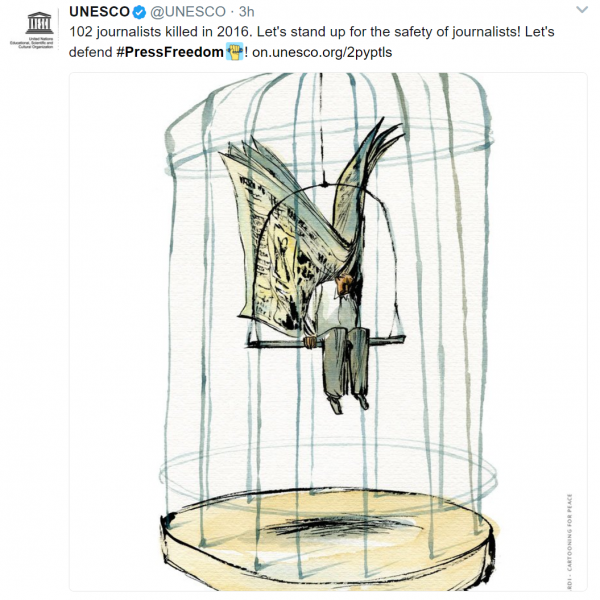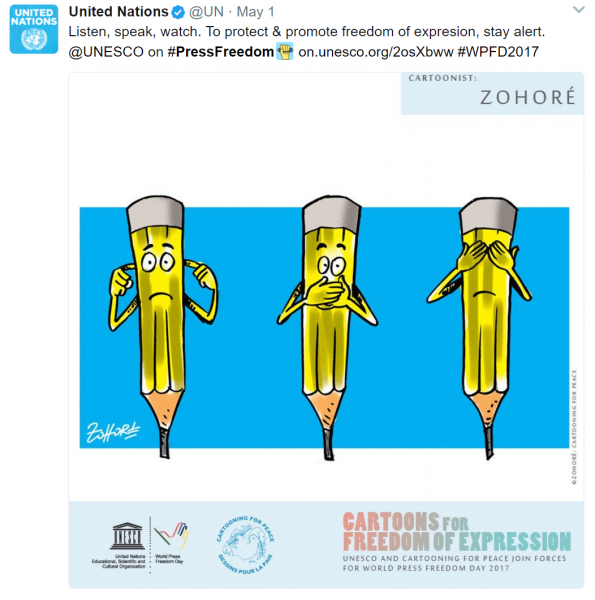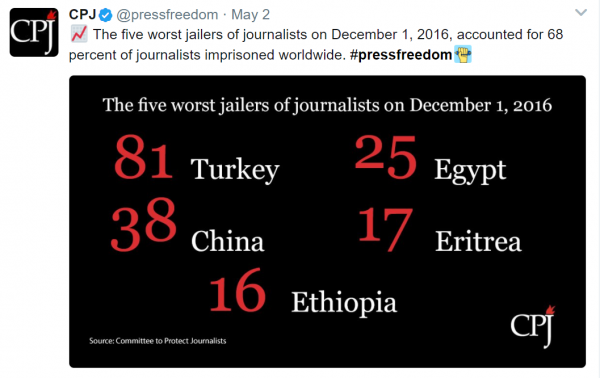Freedom can never be shackled, imprisoned, and killed. If this happens anywhere, it is invariably when the courage to sustain it and keep it fluttering appears to dissipate or the strength to defend an argument weakens. When does an argument weaken? This happens when it doesn’t have too many takers from the masses. This simply means that an argument that has failed has either not been communicated honestly or has had a half-hearted attempt to bring it out in the open. When this happens, it is secrecy and a reluctance to allow a reasonable debate that is to be blamed. Why say freedom has been curtailed?
When vested interests hide behind a façade of freedom of expression, speech, or even the press, every kind of hullaballoo created is unjustified and deserves not to be tolerated. Thus any argument about the freedom of press must always come out in the open and prove that it is not linked to an action or intent that may ultimately harm the interests of the masses. Some people argue that India slipping to 136th position out of 188 countries in the freedom of press ranking is serious and reflects the way the establishment has been behaving. A few notches down in ranking is not an indicator of this freedom getting truncated but tells us that we need to add to its strength. Look at the way dissent is openly expressed in the social media. Look at the rise in the number of bloggers writing fearlessly. Look at the way technology has reached people and is helping them connect the dots. We are definitely living in times when the mainstream media cannot afford to emulate the behavior of some wayward and fee-hungry lawyer willing to defend even disturbing distortions in concepts or ideas that have been created to benefit only a few. The debates on our television channels cannot go on and on to defend views that only a section of the political establishment wishes to promote. People are no longer as accepting as they were when the media was the only feeder. Those were times when news was all about views of a few and this is no longer true.
It isn’t only the journalist who is now reporting, writing, and analyzing. And the masses are no longer just reading, watching, hearing and debating in small groups. The masses are expressing their opinion through the social media and the blogs. Dissent is a humungous reality. The mainstream media can no longer get away with misrepresentations. Governments and laws cannot hold this turbulence of mass-generated opinions down… that is, if this is what they primarily aim to do. If Section 66A “arbitrarily, excessively and disproportionately” wishes to contort and distort the right to free speech, right to dissent, and the right to know, then it needs to be amended. Justices J Chelameswar and Rohinton F Nariman in their judgement in 2015 have already called this section “open-ended and unconstitutionally vague”. The truth today is that only the truth shall prevail and the press cannot justify tilts-on-one-sided-stilts and favour-flavoured opinions anymore. No one can possibly convert the freedom of the press into a mere slogan and get away unscathed.
Yes, if freedom to express is countered by attacks on journalists, internet shutdowns, and flurries of cases of sedition, the press needs to come forth with effective coverages and unbiased opinions. The Prime Minister is anyway known for his pro-freedom quotes and did say last November that “the press is responsible for upholding free-speech. The government should not have any interference in the working of the media.” However, he did follow it up by adding that “freedom of expression needs to be followed, but there must be limits. Like a mother who tells her children not to eat too much.”
Mr Modi doesn’t define limits to freedom of the press but even during his tenure there have been a lot of cases of physical violence, journalists being labelled as spies, and reporters being sent to jail for allegedly partnering separatists, terrorists, Maoists, and Naxalites. Even the bolder among the non-journalist folk who have been expressive on the social media have had cases of sedition slapped on them. No, Mr Modi has not initiated any of these actions but officials down the line and decision-makers other than him have definitely laid an unjustified emphasis on ‘limits’. These people have obviously never realized that the media or the fourth estate is just as important as the executive, legislature, and the judiciary because they are the watchdogs of the society and whistle-blowers rolled into one. Those who write and report for the mainstream media and even those who blog are risking their life to bring out information that has been deliberately hidden and do this as a part of their daily routine. The aim is to ensure that wrong-doers get what they deserve. Any action that prevents an unimpeded flow of such information is what can be said to be an attack on the freedom of press.
Is there anything called ‘too much of freedom’? Towing the line of whoever wields power is definitely going off limits. Misrepresenting facts to make them appear acceptable is misusing any sort of freedom. Creating information bits when there is none is insulting freedom. Drowning voices of dissent to give credence to whines of vested interest is not what freedom is all about. Allowing truth to wait and die before expressing its will is taking freedom for granted. Anyone in the media resorting to any of these acts must be stopped. But if only the powerful feel asphyxiated when the truth is printed, the press needs to be applauded. And yes, by the way, Mr Modi isn’t Trump and never accuses the media of being producers of fake news and never boycotts opportunities to meet the media… though yet there is a lot that needs to change at the way freedom is perceived at the ground level.
.
.
.
Some interesting tweets on freedom of press…
.
.
.
Arvind Passey
04 May 2017













